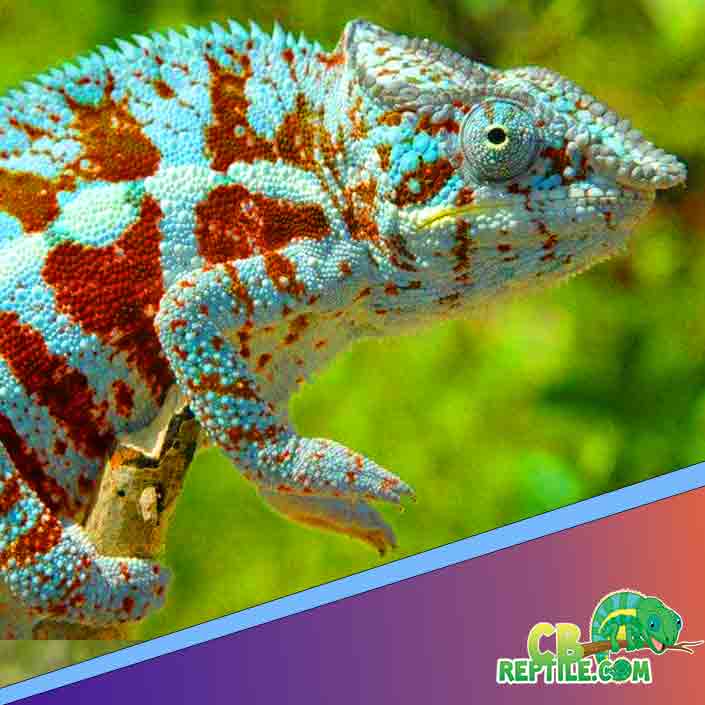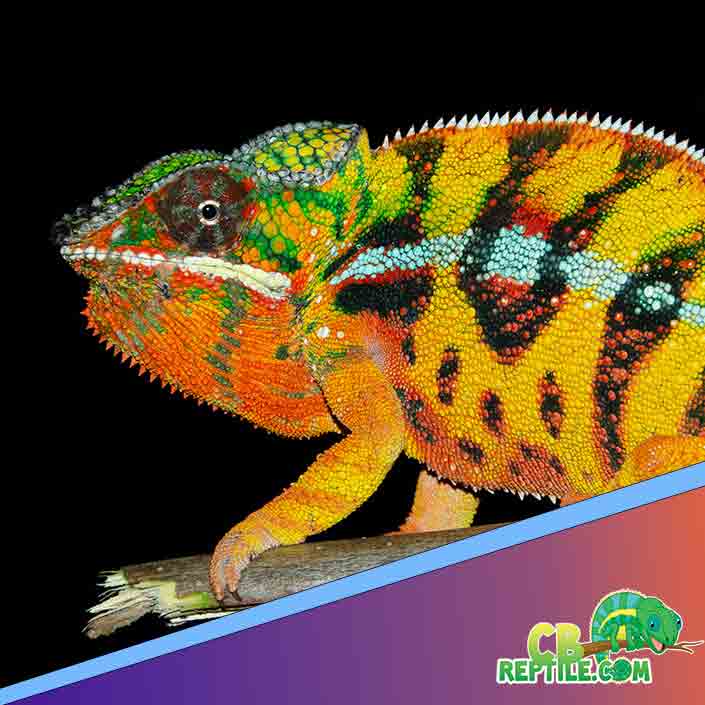How to Breed Panther Chameleons: Egg Incubation & Hatchling Care

Pre-Lay & Laying Bin Setup

Once your female has been properly cycled, paired, and shows gravid coloration and appetite changes, the clock starts. Provide a laying site well before she’s due, so she can dig without stress, mon.
- Bin size: 12–14 inches (30–36 cm) deep with escape-proof sides.
- Medium: Slightly moist washed play sand alone, or a 50/50 mix of sand and organic topsoil. It should clump when squeezed but not drip water.
- Placement: Inside the enclosure or in a secure lay chamber; offer visual privacy to prevent abandoning tunnels.
- Hydration: Maintain enclosure humidity with daily misting, but keep the lay bin itself just moist—not wet.
When she finishes and refills the tunnel, give her a solid drink and a calcium-rich snack. Then it’s time to harvest the eggs with gentle hands and a calm vibe.
Collecting Eggs Without Stress
Carefully dig along the tunnel to the chamber. Use your fingers, not tools, to avoid damaging shells.
- Do not rotate eggs: Mark the “top” of each egg with a pencil the moment you see it, and keep that mark facing up throughout incubation.
- Discard slugs: Infertile, yellowed, or misshapen eggs (“slugs”) can be removed so they don’t mold up the box.
- Weigh & record: Note date, dam and sire, clutch count, and egg mass if you’re tracking growth, bredren.
Incubation Media, Boxes & Humidity Control

Panther chameleon eggs incubate well in ventilated plastic deli cups or sealed containers with a pinhole or two for gas exchange.
- Media options: Fine vermiculite, perlite, or a 1:1 blend. Some keepers use HatchRite. Aim for a moist but not wet feel.
- Mix ratio (by weight): 1:1 water to vermiculite is a classic start. If you’re measuring by volume, go lighter on water and test the clump—no dripping, mon.
- Egg placement: Half-buried or nestled in small depressions, spaced to reduce mold spread.
- Humidity stability: Condensation on the lid is normal; if droplets rain on eggs, blot and reduce moisture slightly.
Incubation Temperature & Timeline
Steady temps are the heartbeat of a smooth incubation. Big swings can prolong incubation or stress embryos.
- Target range: 24–28 °C (75–82 °F). Many breeders find 26–27 °C (78–80 °F) a sweet spot.
- Timeline: Expect roughly 6–9 months. Cooler temps lengthen incubation; warmer temps shorten it, but don’t rush the vibes, mon—slow and steady wins.
- Thermometer: Use a reliable digital probe and/or data logger inside the incubator and inside a container for real readings.
- Light cycles: Eggs don’t need light, but stable room rhythms can help you monitor conditions consistently.
Pro tip: Avoid opening containers too often. A monthly quick check for moisture and mold is usually enough.
Candling, Sweating & Pipping
A dim flashlight can reveal a network of vessels (veining) in fertile eggs after a few weeks. Don’t over-candle; keep stress minimal.
- “Sweating” stage: Late in incubation, eggs may look moist or dent slightly—classic pre-hatch signs.
- Pipping: Hatchlings slice the shell with an egg tooth and rest with their heads out. Don’t pull them; give them time to absorb yolk.
- Assisting: Only if an egg is clearly in trouble (smell, collapsed, or overdue by weeks) and you have experience. Otherwise, patience, mon.
Hatchling Setup: Tiny Trees, Gentle Breeze
Once babies emerge, move them to a nursery with excellent ventilation, safe plants, and easy access to water.
- Enclosure: Small, screen-sided or hybrid enclosures to keep feeders close. Think 12×12×18 in. or group nurseries with space and sight breaks.
- Perches & plants: Fine branches, pothos, schefflera, or ficus for cover and microclimates.
- UVB: Linear T5 HO 5.0 (or equivalent) across the top; provide shaded zones so babies choose their groove.
- Basking: Gentle basking spot ~28–29 °C (82–85 °F) with cooler perches to escape heat.
- Humidity: 50–70% baseline with daily cycles; allow dry-out between mists to prevent respiratory issues.
Hydration: Mist, Drip, Repeat
Hatchlings drink from droplets, not bowls. Provide frequent, light misting—morning and evening works nice, mon. A slow dripper over leaves helps shy drinkers. Ensure surfaces dry later to keep air fresh.
Feeding: Tiny Prey, Big Nutrition
Offer appropriately small feeders and keep them active with gutload. Variety keeps bellies happy and growth smooth.
- Starter feeders: Flightless Drosophila fruit flies (melanogaster, then hydei), pinhead to 1/8″ crickets, and small bean beetle larvae.
- Frequency: 1–2 times daily for the first weeks; remove obvious leftovers to keep it clean.
- Supplements: Light dusting with plain calcium most feedings; calcium with D3 and a multivitamin on a conservative schedule (e.g., every 1–2 weeks) depending on your UVB strength and vet guidance.
- Gutload: Dark leafy greens, squash, sweet potato, bee pollen, and quality commercial gutloads.
Watch for straight, strong limbs and bright eyes—good signs your nutrition and UVB are on point.
Housing & Group Dynamics
Panther chameleons are solitary spirits. You can start a few hatchlings together briefly in a larger nursery only if feeders and cover are abundant and you’re monitoring closely. At the first hint of food competition, stress, or nipping—separate them, mon.
Health Checks & Record-Keeping
- Daily: Appetite, posture, color, hydration (urates off-white to light yellow).
- Weekly: Weight checks to confirm steady gains.
- Sanitation: Spot clean daily; full wipe-downs as needed with reptile-safe cleaners.
- Vet connection: Establish a relationship with a qualified reptile vet for fecals and advice.
Why Work with Experienced Breeders
When you source animals or seek guidance from seasoned folks, you skip guesswork and protect your lines. CB Reptile has been a go-to name in the chameleon world for almost two decades, focusing on healthy, captive-bred stock, transparent husbandry, and customer support—easy vibes and strong animals, mon.
If you’re browsing chameleons for sale, prioritize reputable breeders with documented care and lineage. Your future clutches will thank you.
